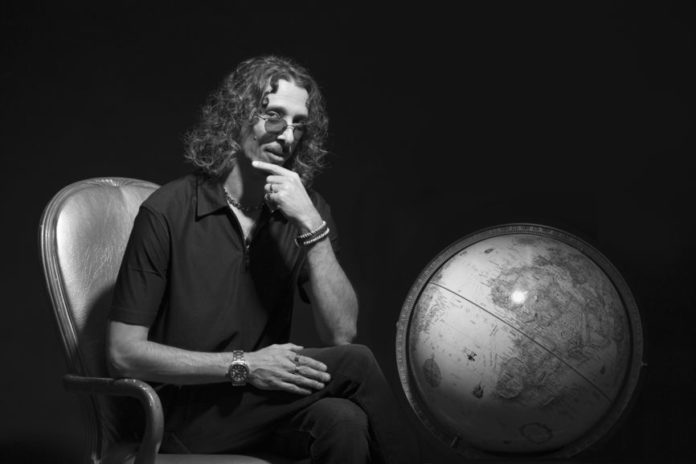My introduction to Kyle Kushman, one Adam Orenstein, took place last year over the phone during a short call that lasted two hours before either of us realized it. That’s how easy and enjoyable it was to reminisce about life and cannabis with someone I didn’t even know. It was as if I had always known him. That sense of familiarity seems to extend to a cannabis community that enjoys an enduring relationship with the noted grower, educator, consultant, Vegamatrix creator, and former High Times writer and cultivation expert—the first ever employed by the publication. Kushman has an individual look, to be sure, and is naturally outgoing and articulate, but the ease he engenders in people is more likely the result of his character traits that serve as the foundation for what he calls his weedlebrity, a label I came to appreciate the more I thought about it. Later, as we engaged in a wide-ranging interview at the Woodland Hills, California, home he shares with Susie Ambrose, his wife and business partner, Kushman spoke with passion, humor, and more than a little amazement about the unintended journey that brought him to his current state of weedlebrity.
“I get recognized in public weekly, sometimes daily, especially in California, where everybody smokes,” he said. His fame, he readily admitted, rests on the five years (1999 to 2004) he spent as a High Times staff writer. “It definitely paved the way for my life,” he said. “I didn’t think I could do it, and couldn’t believe I was being offered the job. My dad was an English teacher and I had a very good vocabulary, but I thought writing was just glorified talking. I soon learned, after having a twelve-page article edited down to four, the two are not the same. ‘Don’t you know about punctuation? Don’t you know what run-on sentences are?’ I actually had to learn these things, so not only did I get a job and a career, but I also got a new skill set. In fact, I learned how to write at High Times magazine.”
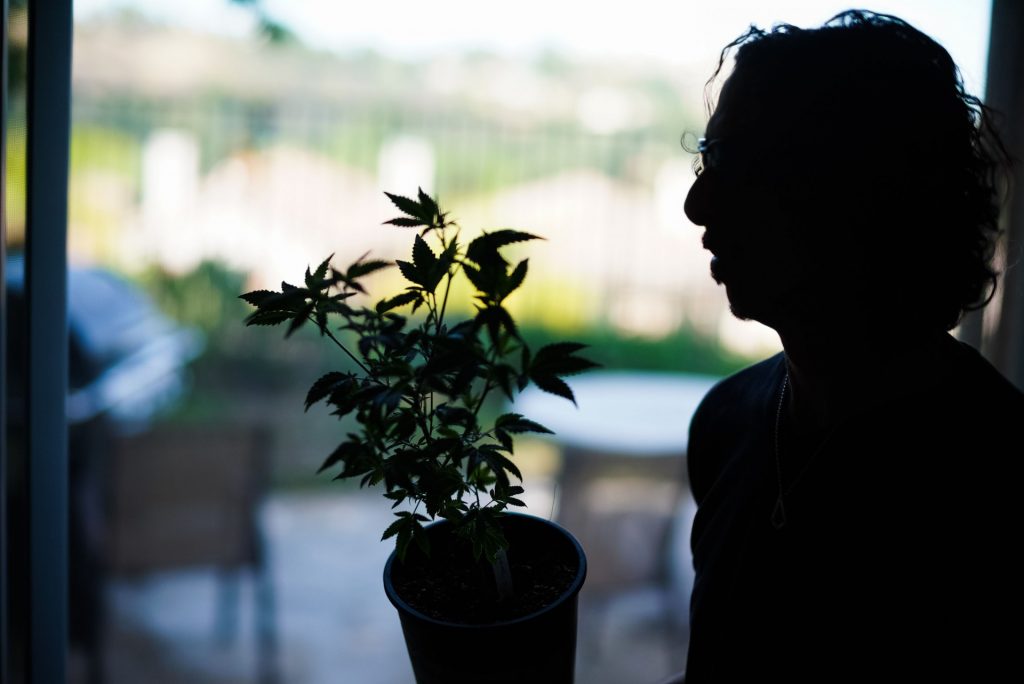 Kyle Kushman the Master Grower
Kyle Kushman the Master Grower
As important as High Times was to Kushman’s career, however, his standing as a cultivator of potent Purple Kush paved the way for his introduction to the editorial staff, long before he ever wrote a word for them.
“I shared a joint with the proprietor of a store called Not Fatally Tie-dyed, located in New Paltz, New York, and his eyes bugged out of his head when he saw the pot,” Kushman recalled. “He asked me where I had gotten it. It was my weed, of course.” That was in 1991, and the 25-year-old—who was born on Long Island and raised in the Westchester County suburb of Yorktown—had been growing for several years, producing limited quantities of very-high-quality flower. He said cultivation skill came naturally to him.
“A guy gave me a little Emily’s Garden, which is a little reservoir sitting on top with Hydroton pellets in it, and it pumps water up from the bottom,” he said. “He gave me a little tub of blue powder and a tub of green powder and some pool pH test strips, and that was it. It just seemed so easy.”
But another, more practical reason also contributed to the quality of his flower. “Attention to detail,” he said quietly. “Literally, the first buds I ever grew were the size of soda cans. I said to myself, ‘Self, your life is never going to be the same.’”
At the time, very little marijuana was grown indoors. “It was very new,” he said. “There were only two hydro shops in the country, one on the West Coast and one on the East Coast.”
“My role is to not be ashamed, to be unabashed, to show a good front, and to normalize the impression of people who use cannabis.” -Kyle Kushman
Serendipitously, smoking the eye-bugging joint with his proprietor friend was a life-changing moment. “Do you want to meet somebody from High Times? My girlfriend knows them.” Before long, Kushman was a regular visitor to magazine’s Manhattan offices.
“I was a pot dealer for them,” confessed Kushman. “I would go into the city and sell them weed. I had this Purple Kush that was all organic, and I was selling it to a dealer in Alphabet City, who told me he was selling it to Paul Shaffer of The Late Show and Yoko Ono and Sean Lennon. He was paying me $4,000 a pound for my organic weed way back in 1991, which is when my relationship with High Tines began.”
The Purple Kush apparently was held in such esteem by the staff that the editors decided to cover his grows in three separately published photo essays, titled “Adam’s Garden 1, 2, and 3.” Part two became the centerfold and part three took the cover and the centerfold. The “amazing Purple Kush “also wound up gracing the cover of the Sunday New York Times,” said Kushman with obvious pride.
Becoming the Kush Man
During this same period, Kushman, writing as Orenstein, began a freelance gig with the magazine, penning a monthly cultivation column called “Ask Adam.” “They would mail me a floppy disc once a month with a dozen or so questions, and I would mail the answers back. I didn’t have internet back then.” Still, as much as they considered him a trusted supplier and respected cultivator, Kushman never really socialized with the High Times staff. “I wasn’t that cool,” he said. Little did he know a makeover was on the horizon.
In 2004, a few years into writing “Ask Adam,” he received a call. “I was sitting in a parking lot with a girlfriend, smoking a joint, and the phone rang. It was [High Times editor] Steven Hager and [editor-in-chief] Chris Simunek, and they asked me if I would like to have a staff writer position. I remember thinking about it for a moment, and Simunek said, ‘Don’t think about it for too long because the next person we have to offer the job has much better tits than you.’”
The salary was $35,000 a year, and he was required to move to New York. Rent in Brooklyn ate up 60 percent of his paycheck. He also had to come up with a nom de plume. “I wanted to have a cool name, I didn’t want to be Irv Green or Bud Levi,” he said. Someone mentioned Kushman, he added Kyle, and in an instant Kyle Kushman was born.
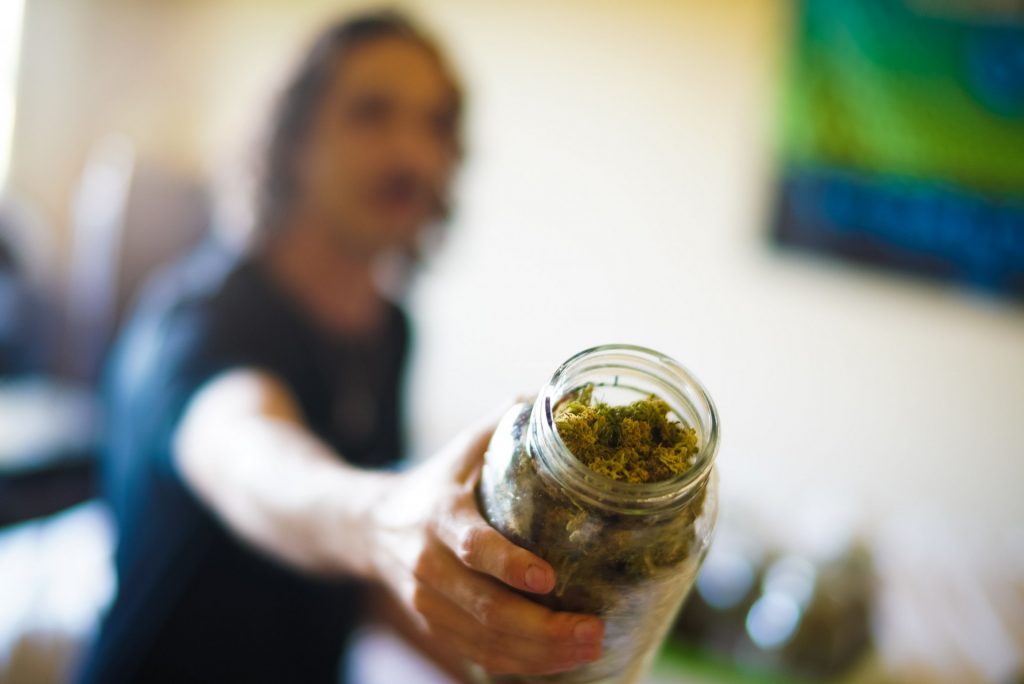 Benevolence Through Good and Bad Decisions
Benevolence Through Good and Bad Decisions
“My life has been a series of good and bad decisions, but not a lot of planning,” said Kushman. “Even deciding to take a job with High Times when I had no experience and didn’t even enjoy reading and writing. I took the job because it was right up my alley. It was like being offered a job at Rolling Stone.”
Despite his inexperience, Kushman threw himself into writing. “My first year at High Times, I wrote thirteen feature stories over twelve issues and had one issue that had two features in it. I took the bull by the horns and wrote about all my grower friends and started a column called “High Tech,” in which I began giving away all of my knowledge.”
“I took the High Times job because it was right up my alley. It was like being offered a job at Rolling Stone.” -Kyle Kushman
Thus was set in motion another facet of the Kyle Kushman persona: the educator. “While everybody else who was coming up and doing it for the money was hording their knowledge, I was just free with it,” he said. “I wanted everybody to be able to do what I did. It wasn’t until later that I realized I was getting a lot of credit from the audience for being benevolent. That really became part of my modus operandi as I went on, that I would never hold anything back.
“The other thing that led to my notoriety is that I became the products guy at High Times,” he continued. “I started a products review and the STASH Awards, and immediately started receiving products like crazy. I gave them to all my grower friends, and then I would go and experience how they worked. I also wrote a lot of product reviews, which made it easy for a lot of people to decide what products to use when they were just starting out growing. I told them what fertilizers, soils, and measuring devices, and what automated growing systems to use.
“I set a lot of companies on the path of becoming million-dollar companies,” he added. “They were nothing when they started, and then I would write a “High Tech” about them, and the next thing you know, they’re buying office space.”
Kyle Kushman’s Post-High Times Career
After five years as a staff writer, Kushman quit. “It wasn’t High Times,” he explained. “I just wasn’t a city person. New York was starting to change the way I thought about things. It was time to leave.”
He had also become burned-out on writing. “I kind of felt like I had covered everything, like playing the same song over and over again. How do you prepare your soil? How do you take clones? How do you plant seeds? How do you know when your plants are ready to cut down? How do you dry and cure the plants? All the classic songs.”
Although he moved to California’s Mendocino County, he continued to write “High Tech” for another year. “I was supposed to live at Eddy Lepp’s farm and would have been there for his bust, but instead I stayed in a doublewide trailer in Laytonville. Then I bought a house in Willets and grew there for about seven years. It’s also where I developed Veganics.”
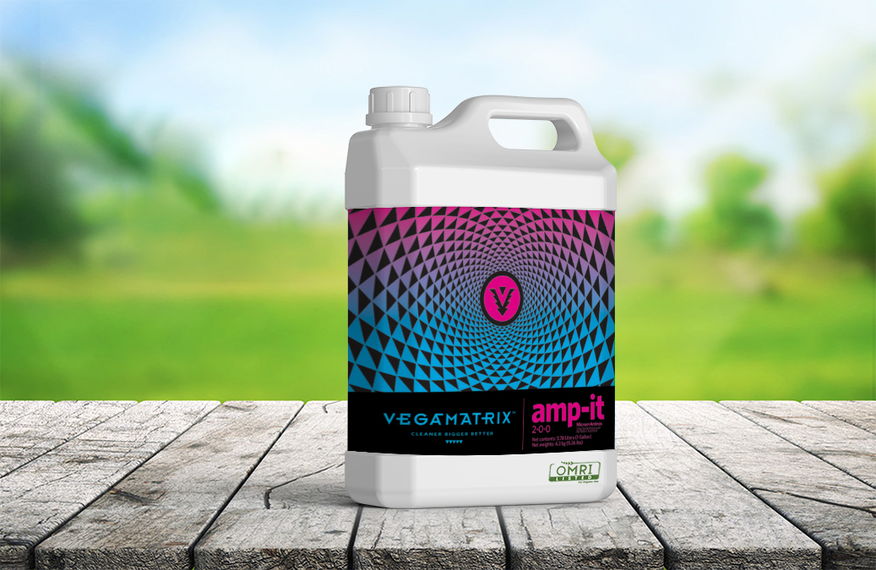 Kushmans’ Vegamatrix Nutrients
Kushmans’ Vegamatrix Nutrients
In 2014, Kushman released his Vegamatrix cannabis nutrients, which he created after being turned on to a vegan nutrient made by another company. The resulting flower was like nothing he had ever grown. “The difference was that everything tasted better. The flavors were stronger, there was no taste of the fertilizer, and it didn’t taste like dirt. The cleaner diet allows the plant to feed more efficiently, so it spends less of its biological energy trying to uptake the nutrients and more energy producing terpenes and cannabinoids. It also had higher THC and terpene levels, but I didn’t know any of that at the time. All I knew was that the smokability factor went way up. [The weed] was smoother, with much less harshness in the throat.”
But the nutrient he had used needed refining, he decided, so he went to work. “It took me ten years of product knowledge, three years of R&D, and an organic chemist to develop the product,” he said. “It’s a very unique product, a premium nutrient, like buying good ingredients to cook with.”
What makes vegan nutrients special? Kushman explained, “In synthetic gardening, there are no animal products. It’s all mineral salts and synthetic minerals. In organic gardening, you have meals from grains, seaweed, and fish up to bone meal, blood meal, and even guanos—excrement—and urea, which is urine. That’s a lot of potential for pathogen contamination. Organic is better than synthetic and is better for the earth, but it’s also supposed to be better for us. There is no nutritional difference. The difference is in the residues, and that’s where Veganics excels. I don’t have heavy metal residues and have extremely low salt residues, which is where it becomes extremely valuable for people with actual ailments, such as autism.
“Autistic patients sometimes go through what’s called chelation therapy to remove heavy metals and contaminants from their bodies,” he continued. “It isn’t proven as a link, but a lot of people believe the aggregate toxicity of heavy metals in the environment is what has led to the increase in autism. I happen to believe it is aggregate toxicity, so that’s where Mieko and UF4A.org come in.”
Joey’s Strain
In 2006, Kushman met Mieko Hester-Perez, founder of the Unconventional Foundation for Autism, whose son was on the extreme end of the spectrum. Kushman donated one of his strains to Mieko for use by Joey, and the results were striking. “Joey was about 13 years old when I first met him,” recalled Kushman. “There was no eye contact, and he was doing the rocking. If you put your eyes in front of him, he would look away. Three months after smoking cannabis, and specifically veganic cannabis, he had changed so much that the school he had been going to for four years said they had to retest him because they didn’t think he was severe enough to go the school anymore.”
Ironically, Kushman said he did not intentionally develop a medicinal strain. “It just happened to be one that I donated to Mieko, and the one that worked the best,” he said. “I could make twelve more Joey strains. I have the whole seed line.”
Spreading Marijuana Genetics
The way Kushman sees it, the patience he exhibited during and after his growing days is about to pay off. “I’ve been biding my time, and now I can do what I want,” he said. “If I want to grow a lot of marijuana, I can do that. If I want to breed a lot of strains, I can do that. If I want to do multimedia, I can do it. I kind of want to do a little bit of all of it. The time has come.”
As for his legacy? “I plan on spreading my genetics across California and then into other states. Kyle Kushman Genetics and Kushman Veganics are in Nevada now, and in the next few months you will be able to purchase them there and hopefully, by the holidays, in Southern California.”
He added, “I’m also about to close a deal in Los Angeles with a pretty big company that has five licensed dispensaries in California. I’m going to take over the grows. They are going to provide me with space to do breeding, and they’re also going to build a learning annex for me.”
He recently partnered with Oaksterdam University to develop online courses. “We’re rebuilding KyleKushman.com, which has been a free site for a number of years, and relaunching it as a subscription site co-authored with Oaksterdam University, with certain things that I only offer on my site. It’s all organic and veganic cultivation-based.”
Oaksterdam has approved Vegamatrix for use at the university, so “Oaksterdam University Approved” is going on all Kyle Kushman Brands bottles. The university also will sell the nutrient to students. Kushman’s wife, who runs Vegamatrix and Kyle Kushman Brands, is optimistic about the future of Vegamatrix. “We’re going to take 10 percent of market share in the next five years,” she said.
Kushman also has written a book about veganic cultivation. The tome is due to publish soon. “It’s about everything I’ve learned up to this point, from my cloning techniques and how to sprout seeds to how to cultivate the absolute best flower,” he said.
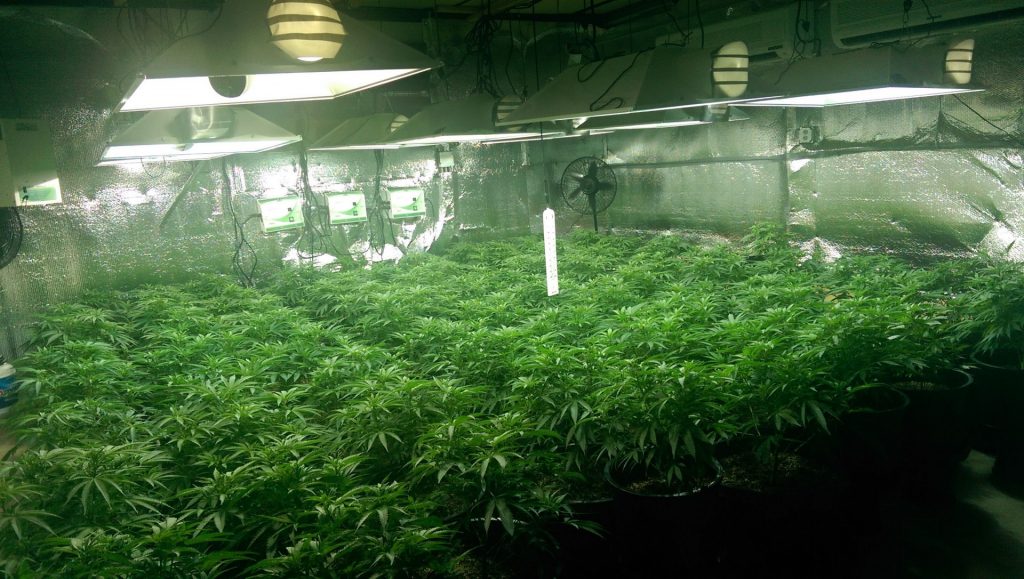 Cannabis Culture
Cannabis Culture
For a guy who avoids too much planning, Kushman has a decidedly full plate of projects lined up for the coming years. About to turn 50 on September 11, he appears very comfortable with his future but still frets about the industry’s future. “If you ask me what the industry will look like in five years, I don’t really know, and I’m a little bit scared,” he said. “But I’m not fearful like I was years ago when I was growing.”
He does worry about the rights of patients, though, especially about the limited number of plants they are allowed to grow under the new regime of so-called legalization. “The product is deemed safe enough to license people to grow it in a commercial fashion, allowing them to make tens of millions of dollars of profit from [weed] using football-sized greenhouses, but if I grow more than six plants, you’re going to put me in jail?
“If I buy [medicinal marijuana],” he added, “I can purchase an ounce a day, but if I grow it, I can only have six plants? Why can’t I grow twenty pounds of weed, store it in my freezer, and go on with my life?”
Whatever the coming years bring, Kushman has no plans to change. “My role is the same as it’s been since I first became a public spokesperson for High Times—which is to not be ashamed, to be unabashed, to show a good front, and to normalize the impression of people who use cannabis, no matter where I am or what I am doing.
“What I bring is my devotion to this culture, because the culture made me who I am,” he continued. “It gave me a life. It’s not just about people being able to go to the store so they can get stoned. Cannabis culture spans nations and continents.
“I think what I want to be remembered for after all of this,” he added, “is that I was a benevolent human being who taught hundreds of thousands of people how to cultivate their own medicine, and I provided them with a handful of very unique strains.”
His current mantra is one he likely will take to his grave: “Don’t forsake the flower. The flower is medicine. The flower is why we’re here.”
 Q&A with Susie Ambrose
Q&A with Susie Ambrose
How did you meet Kyle and end up not only working with him, but also marrying him?
I met Kyle through Dale Sky Jones, executive chancellor for Oaksterdam University. She asked Kyle to teach a course about organic cultivation in 2011 in Ann Arbor, Michigan. I signed up for the course because my family and I were getting into the industry. I Kyle that I could fix his pendant, since I am a custom jeweler in my other life. We started corresponding and the rest, as they say, is history. That was five years ago. We were married in November at the High Times Rasta Roots Fest in Jamaica thanks to his amazing friends at High Times and the beautiful people of Jamaica.
What is your role at Kyle Kushman Brands, and how would you define the company?
I am the vice-president of both Vegamatrix and Kyle Kushman Brands. I oversee all the day-to-day operations of both companies. The companies are geared toward creating products that are top of the line in every aspect. Our goal is to give people products that are healthy, and at the same time don’t destroy our earth. You will be seeing clones, seeds, veganic flowers, and all derivative products thereof on the shelves in dispensaries in Las Vegas and Los Angeles this coming Fall, with statewide and then national distribution to follow as laws permit.
Will we see more deals in other states like the GrowBLOX deal in Nevada?
Yes. Stay tuned. We have a very large project on the horizon right here in Los Angeles.
What new products can we expect to see from KKB in the next year or so, and beyond? You will see his strains as clones, seeds, flowers, and all derivatives thereof. The goal is to let patients have access to medicine that is consistent and readily available. Since Joey’s Strain has helped so many families touched by autism, we are going to have large distribution of this strain along with others specifically designed as medicine. For information about the Unconventional Foundation for Autism and its projects, contact me via UC4FA.org. Kyle has supported the foundation since 2011.
After working in jewelry design for so long, what are your impressions of the cannabis business?
Like the jewelry industry, the cannabis industry is primarily male-dominated, although there are as many women now entering the space. The cannabis space is still very immature. There are those who have been part of the culture for many years and have paved the way for those who are now entering the space. There needs to be balance between those of the culture and those who are here for the “green rush.” The big picture is to make cannabis available as a safer alternative to many poisonous pharmaceuticals while preserving the earth and also patients’ rights to cultivate.
As a custom jeweler, I have been crossing the lines somewhat and creating custom cannabis jewelry for past two years. It is interesting to note that there are so many outside industries that will benefit from the rescheduling or legalization of cannabis.
For wholesale orders of Vegamatrix, visit purelifeveganix.com/wholesale-inquiry.
Contact Kyle at kylekuskman.com.
Listen to Kyle’s CannabisRadio podcast, The Grow Show with Kyle Kushman, at CannabisRadio.com.







